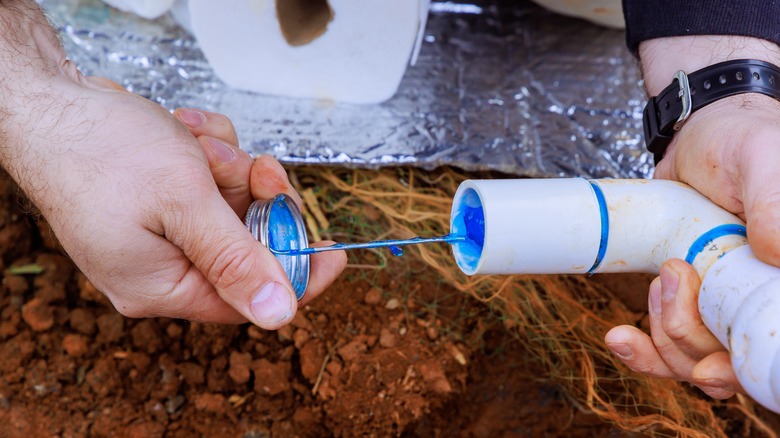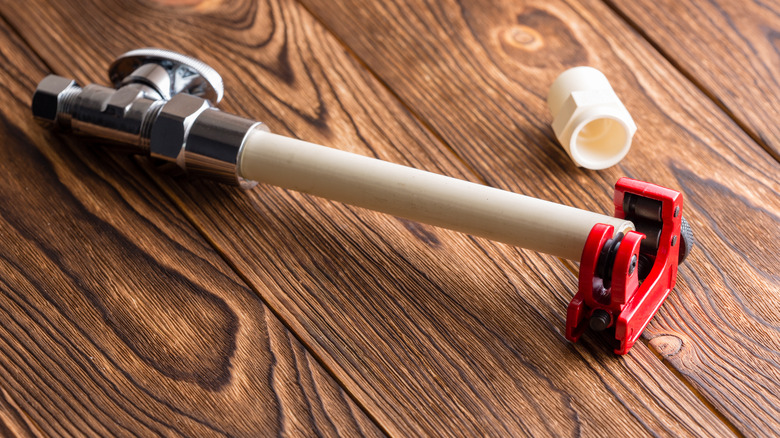The Big Mistake Everyone Makes When Gluing PVC Pipe
Don't ask this at Home Depot: "I need to glue pipes together. Do you have that stuff that comes in metal cans with a little applicator?" The answer depends on the type of pipe you're using and what you mean by "glue." There are three common types of plastic pipe sold for electrical and plumbing use — ABS, CPVC, and PVC — and there are cements designed for each of them. PVC glue is one of the types you should have on hand for home and garden upkeep. But all of the products come in metal cans with daubers in their screw-off lids, so they can be easily confused by a DIYer. To make matters worse, there are a bunch of related products that also come in identical containers. Unless you're familiar with them, you're going to either spend a long time either reading cans in your hardware store or returning the product when you realize you bought the wrong thing.
Let's start by getting a handle on what the three types of pipe are for. ABS is a durable option with a couple of key drawbacks. It's flammable, so it can't be used indoors, and it's sensitive to UV light, so it must be kept out of direct sunlight. It's commonly used for drain-waste-vent (DWV) piping. CPVC is a form of PVC used for potable water lines, and it's both stronger and more resistant to heat than PVC — and more expensive. In some cases, it's used as an alternative to PEX. Meanwhile, PVC is used for cold water delivery and for DWV applications.
So what's in all those cans?
Those metal cans can contain many combinations of cement, primer, and cleaner, and there are other products to boot. Let's start with the basics. CPVC and PVC often require a two-part cement to join them together by forming a chemical bond between each solvent — primer and cement. While separate CPVC and PVC primers exist, you're likely to find coatings made for both. When joining ABS, you don't need a primer at all. There are also combination products that somehow make things simpler and more complicated at the same time — one-step PVC primer and cement, as well as all-purpose cement for all three types of pipe.
There are also clear cleaners for all three types. It's easy to mistake cleaner and primer, but they're not interchangeable. Adding to this confusion is PVC cement for wet conditions, heavy-duty PVC cement, fast-setting cements, PVC/ABS transition cement, CPVC cut-in cement, and identically packaged PVC shower pan liner and you could be in for an adventure. Don't worry, though — as long as you read the labels carefully, you won't have any trouble. There are many handy ways to repurpose extra PVC pipes in your home and garden, so there's good reason to keep a can (or five) around. Happy gluing!

